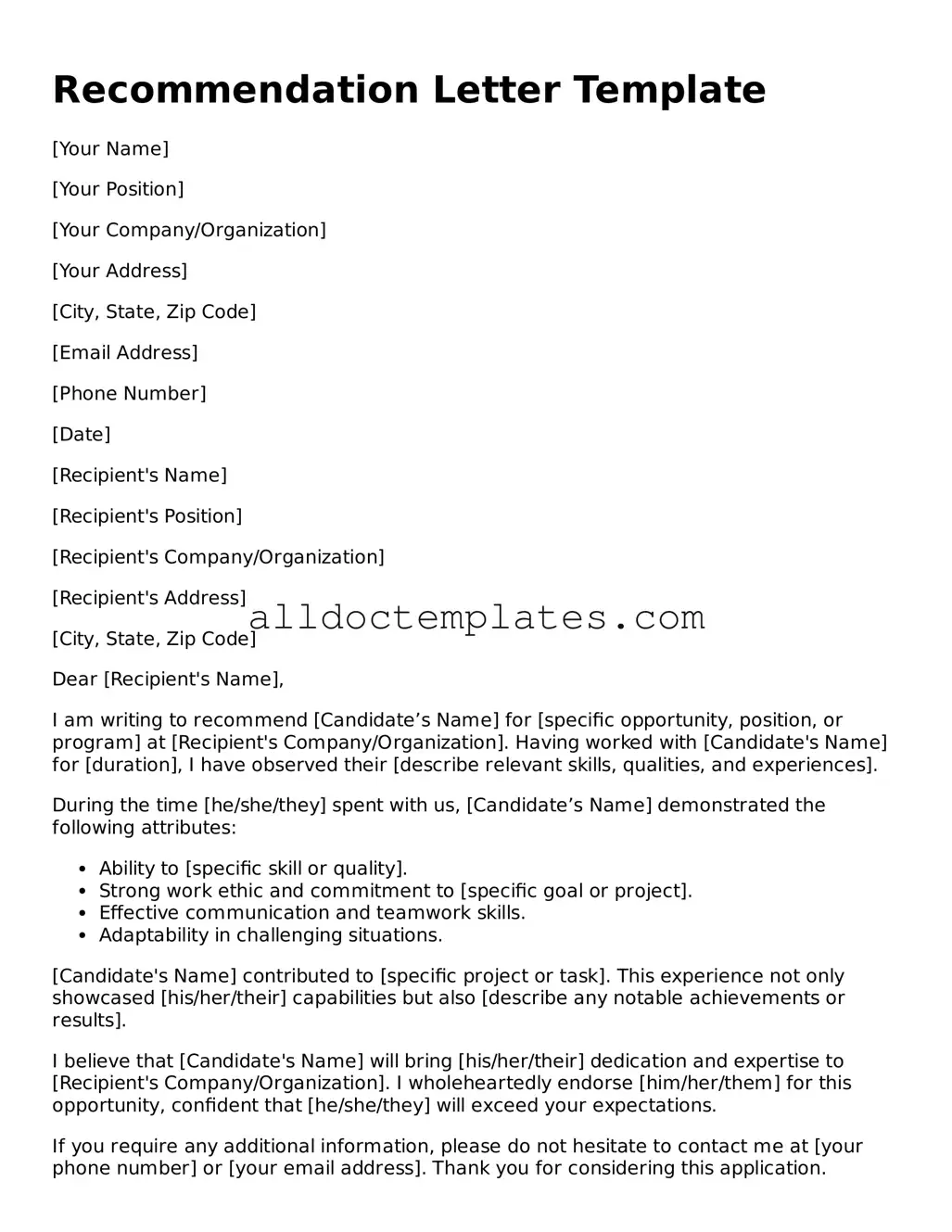Recommendation Letter Template
[Your Name]
[Your Position]
[Your Company/Organization]
[Your Address]
[City, State, Zip Code]
[Email Address]
[Phone Number]
[Date]
[Recipient's Name]
[Recipient's Position]
[Recipient's Company/Organization]
[Recipient's Address]
[City, State, Zip Code]
Dear [Recipient's Name],
I am writing to recommend [Candidate’s Name] for [specific opportunity, position, or program] at [Recipient's Company/Organization]. Having worked with [Candidate's Name] for [duration], I have observed their [describe relevant skills, qualities, and experiences].
During the time [he/she/they] spent with us, [Candidate’s Name] demonstrated the following attributes:
- Ability to [specific skill or quality].
- Strong work ethic and commitment to [specific goal or project].
- Effective communication and teamwork skills.
- Adaptability in challenging situations.
[Candidate's Name] contributed to [specific project or task]. This experience not only showcased [his/her/their] capabilities but also [describe any notable achievements or results].
I believe that [Candidate's Name] will bring [his/her/their] dedication and expertise to [Recipient's Company/Organization]. I wholeheartedly endorse [him/her/them] for this opportunity, confident that [he/she/they] will exceed your expectations.
If you require any additional information, please do not hesitate to contact me at [your phone number] or [your email address]. Thank you for considering this application.
Sincerely,
[Your Signature (if sending a hard copy)]
[Your Printed Name]
